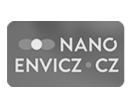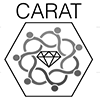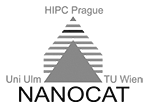The European Space Agency is preparing to return to Venus
15. 01. 2024
2031 will see the launch of the ESA-led EnVision mission to Venus, its aim to map the surface and atmosphere of the second planet in the Solar System using optical, spectrometric, and radar instruments. Czech researchers from the J. Heyrovský Institute of Physical Chemistry of the CAS, the Institute of Geophysics of the CAS, and the Czech Geological Survey are now involved in the preparation of this probe. The goal is to manufacture and test out the “heart” of one of the instrument, spectrometer VenSpec-H: the central processor, the mechanical control unit, and the data processing system. EnVision will answer the question of how and why Venus and Earth evolved so differently. The Czech scientists will also focus on the processes occurring in Venus’ atmosphere, volcanic activity, and surface morphology.
Venus keeps its secrets closely guarded. A very dense atmosphere and continuous cloud belt shroud the planet, preventing its surface from being seen in the visible light spectrum. The atmosphere mostly consists of carbon dioxide, which produces an extreme greenhouse effect. That is why the average surface temperature of Venus is 464 °C. To date, the planet has only been mapped using radar images and only a few probes have been able to land, with their lifetime very limited due to the inability to cool their electronic systems for long periods. However, knowing what the surface of Venus looks like in detail and what is happening on it could help reveal when and how the planet became a hellscape.
The EnVision spacecraft will be carrying on board several instruments designed to observe Venus in detail. First and foremost, the VenSAR dual polarisation S-band radar, provided by NASA, will allow the probe to penetrate the atmosphere and “see” the surface. EnVision will also be equipped with the Subsurface Radar Sounder and a High Frequency sounding radar operating at different frequencies to probe the top kilometre of Venus’ subsurface.
A holistic view of Venus
The EnVision mission is also to have at its disposal a trio of advanced spectrometers – specifically, VenSpec-M, VenSpec-U, and VenSpec-H, which will operate in six different optical bands. The wide range of wavelengths will provide a comprehensive view of Venus. “While VenSpec-M will explore the mineralogical composition of almost the entire surface, VenSpec-U will allow us to map the occurrence of sulphur compounds in the atmosphere and discover the substances which are causing the mysterious absorption of UV radiation. Some scientists have linked this to the possible presence of life in the clouds of Venus,” explains Martin Ferus from the J. Heyrovský Institute of Physical Chemistry of the CAS, who is leading the Czech team.
VenSpec-H will measure concentrations of trace molecules in the lower atmosphere, including hydrogen isotopes in water vapour, which could reveal whether oceans existed on the planet in the past and whether Venus may have resembled tropical Planet Earth after all.
“Back in the early 20th century, the common perception was that Venus was habitable. However, spectroscopic observations in the 1930s led scientists to conclude that there was in fact a high temperature on the surface of the planet due to a massive greenhouse effect. This was subsequently confirmed by satellite measurements in the 1960s. Based on data collected on the EnVision mission, it might be possible to decipher which scenario in the planet’s evolution has led to the persistence of the greenhouse effect there to this day,” Ferus adds.
The trio of spectrometers have separate optical systems but share a central mechanical and electronic control and data processing unit – a central processor, a field-programmable gate array processor, a signal processing system, an actuator motor driverunit together with associated connector and cable harness. The equipment will be developed and assembled in the Czech Republic.
“The Czechs will thus be making an imaginary return to Venus – in the past, a stabilized instrument platform was constructed in Czechoslovakia for the Soviet Vega space probes, which were sent to explore the hellish planet via balloon aerobots in the 1980s,” Ferus points out the historical context.
Why did Venus become a hellscape?
The EnVision mission will make it possible to “see” the surface of Venus at a much higher resolution than the radar observations made by the US Magellan spacecraft in the early 1990s. “This time, the resolution of the radar images will be so detailed that it will allow us to see subtle changes on the planet’s surface due to volcanic and tectonic activity. Complemented by the measurements of the trio of spectrometers, we will thus be getting a unique chance to answer the question of whether volcanoes are still active on Venus and, if yes, how often they erupt,” says Petr Brož from the Institute of Geophysics of the CAS, who is working on the scientific part of the project and on the transfer of data between the international research team of the mission and the Czech construction design team in charge of the “heart” of the instrument.
“This could give us a much better understanding of how it is possible for a planet to change significantly in a relatively short period of time – from a planet where oceans of liquid water may have existed long ago to a hellish landscape,” Brož explains. In fact, according to the researcher, the latest discoveries clearly show that what is occurring within the planet’s interior and the evolution of its atmosphere are interconnected. That is why it is necessary to study the atmosphere, the surface of Venus, and its interior systematically as a whole.
The Czech consortium, which will be in charge of manufacturing and testing the complete operating system for the set of spectrometers in cooperation with Czech companies, is led by Martin Ferus from the J. Heyrovský Institute of Physical Chemistry of the CAS, Petr Brož from the Institute of Geophysics of the CAS, and Veronika Strnadová from the Czech Geological Survey.
The production of the components in the Czech Republic will be funded by the European Space Agency as part of the project “Czech participation in the EnVision mission – the derisking of VenSpec-H development” that falls under the PROgramme de Développement d’EXpériences scientifiques (PRODEX).





















